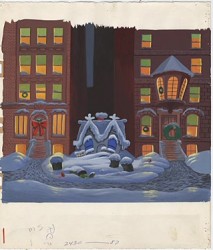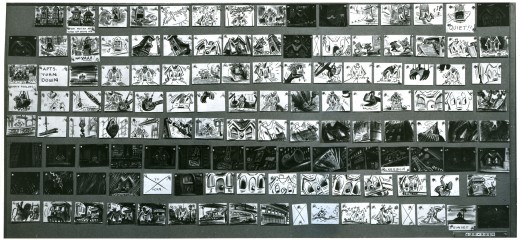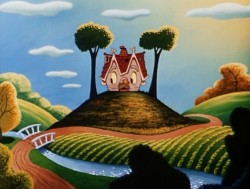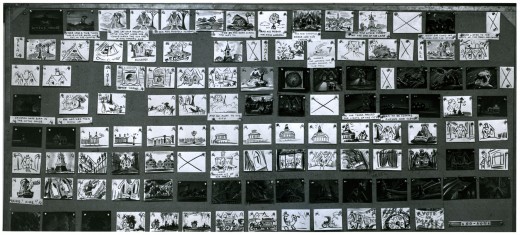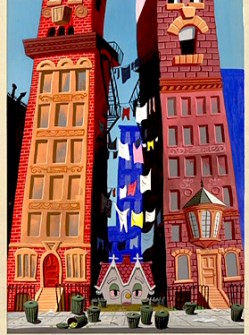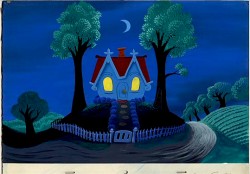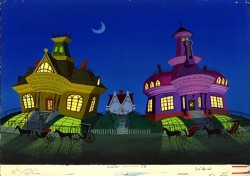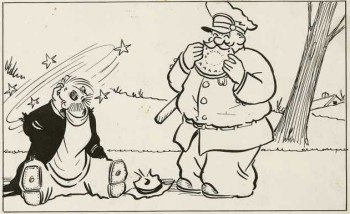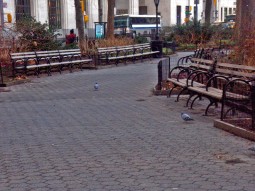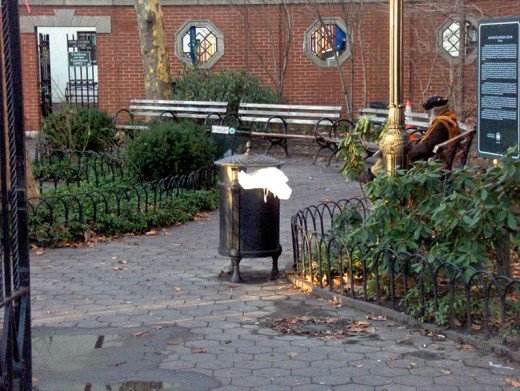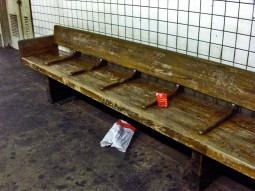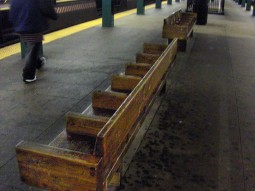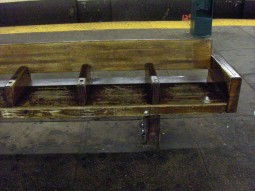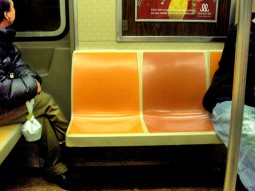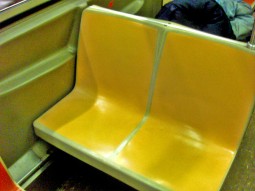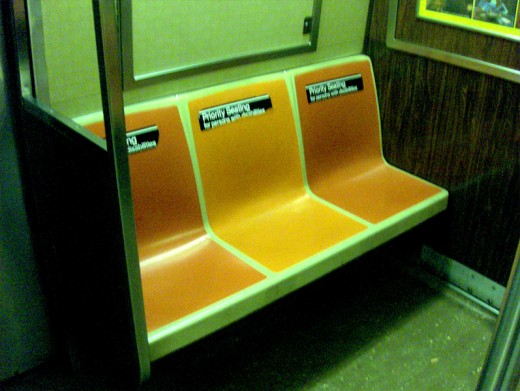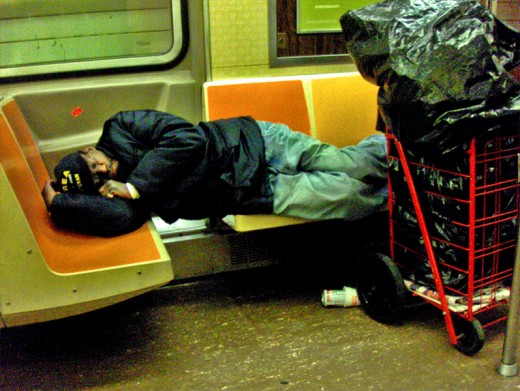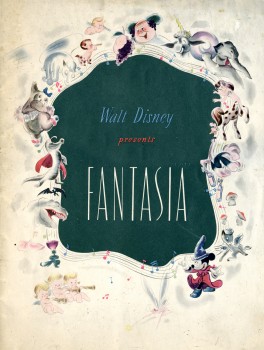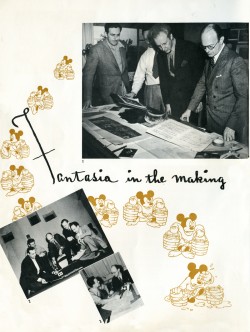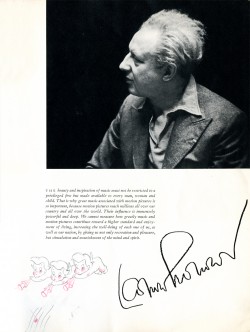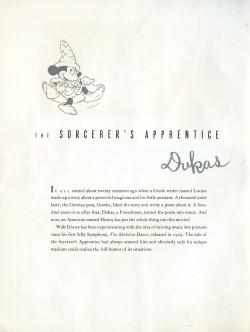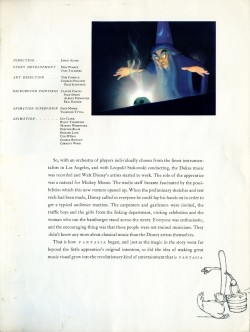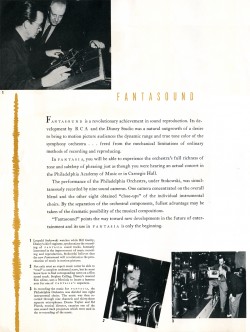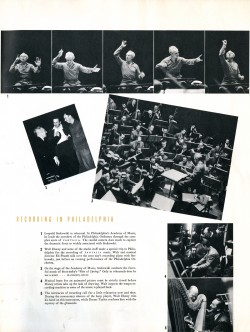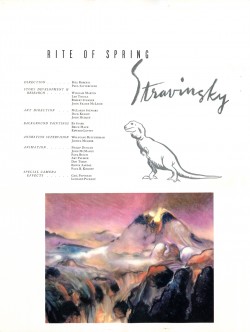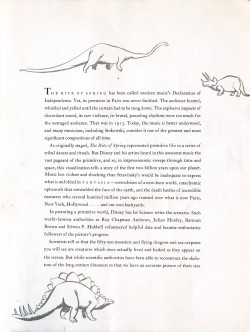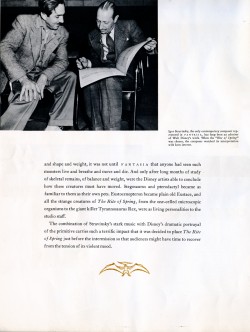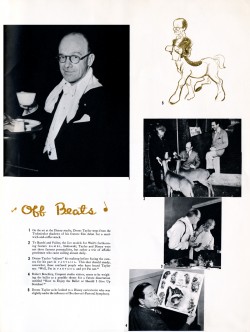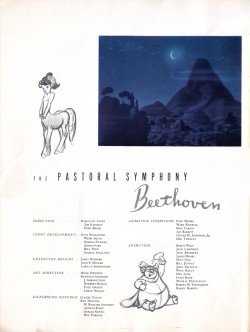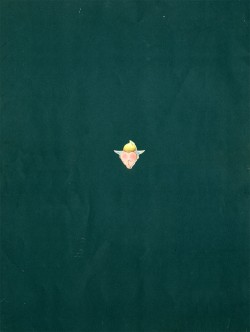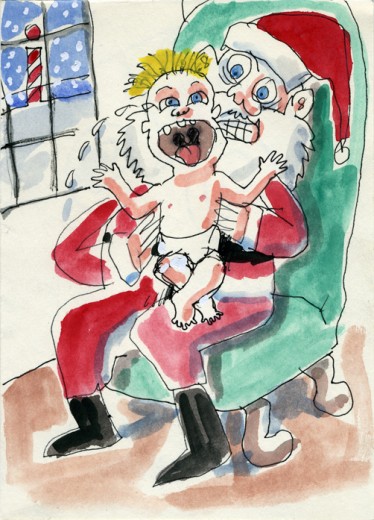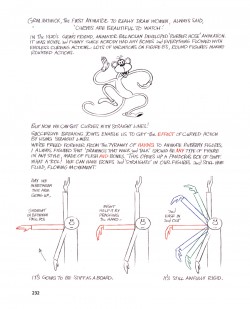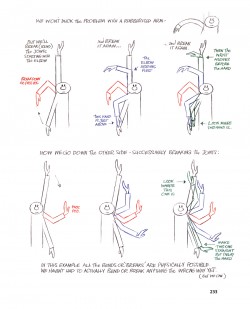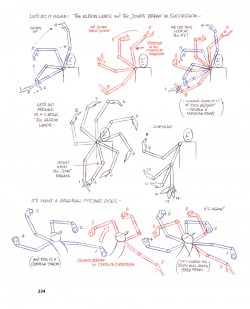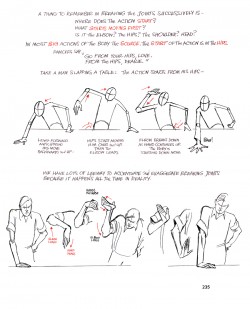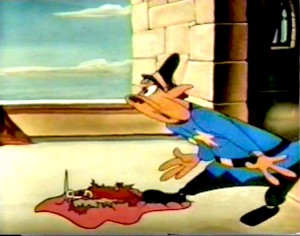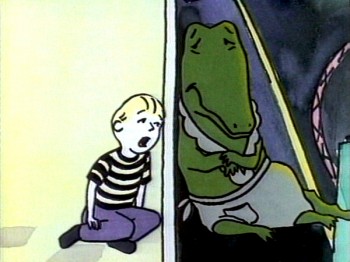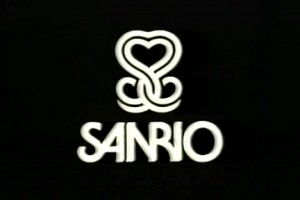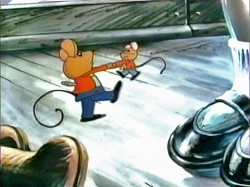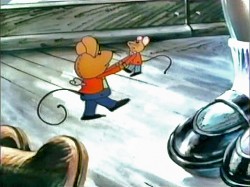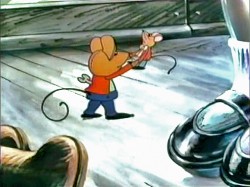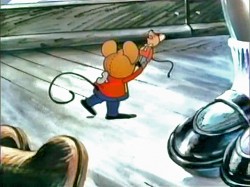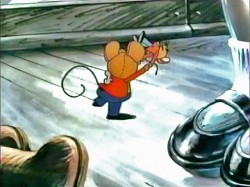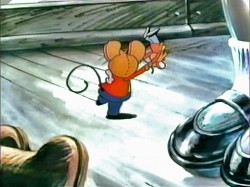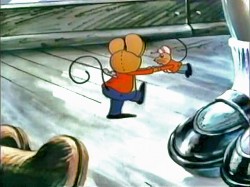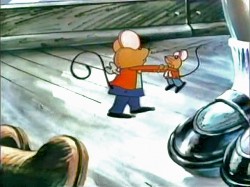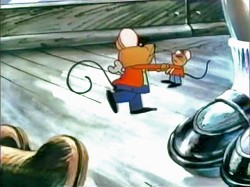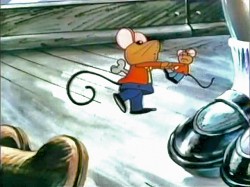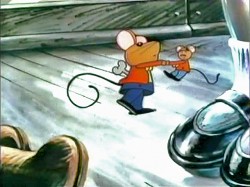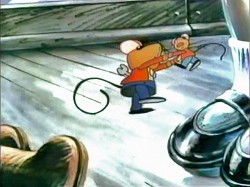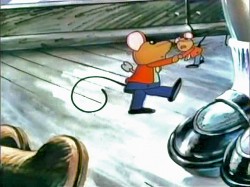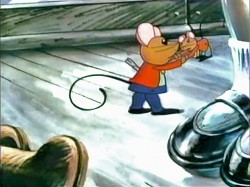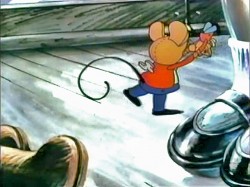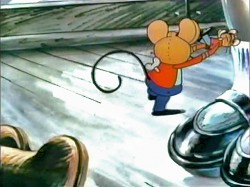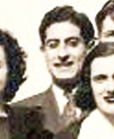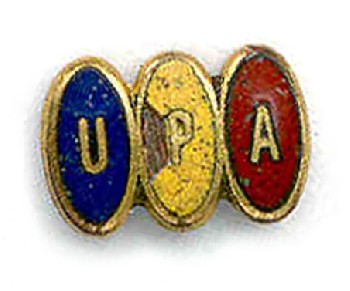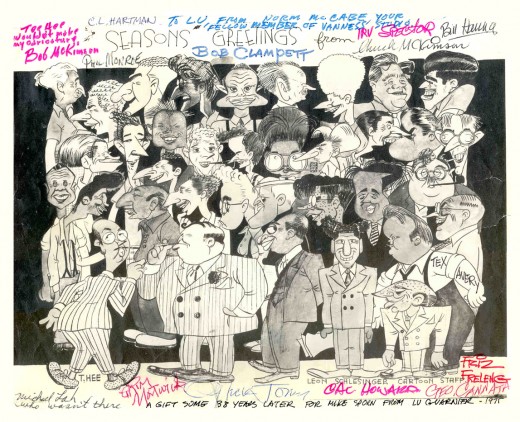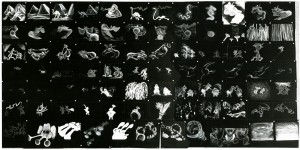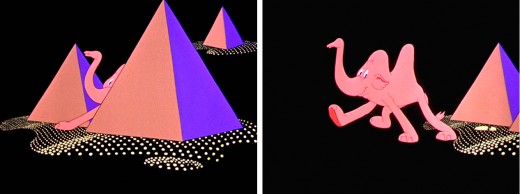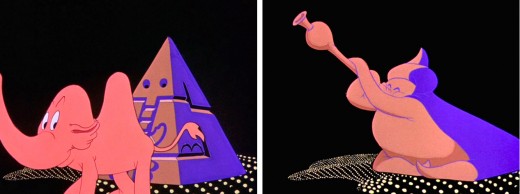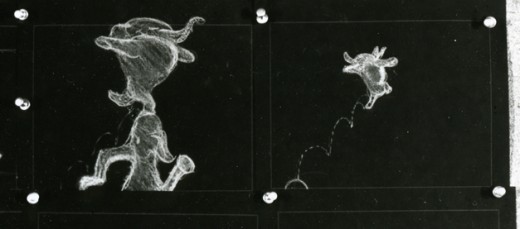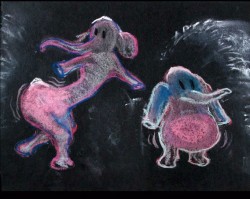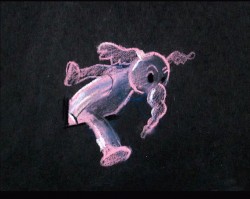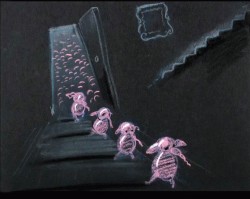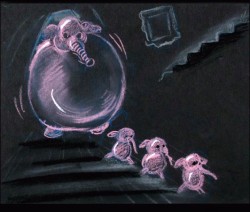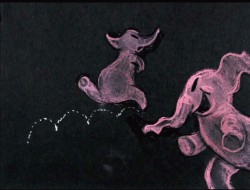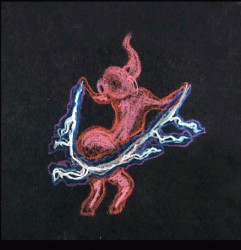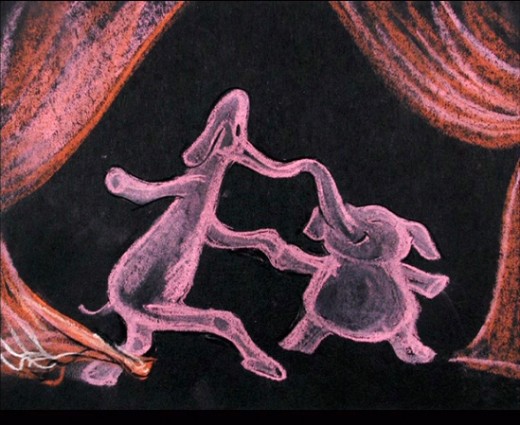Commentary 16 Jan 2008 08:56 am
Rambling about Cheats
- Jerry Beck has a new toybox of a book called The Hanna Barbera Treasury. I haven’t read the book, but I have picked it up and looked at it. It’s a pop-up, pull-out, unfold and play-with-something-on-every-page kinda book. It’s unfortunate, because I think Jerry probably has a lot to say about this company and their history, but the book is designed to be a fun cartoon book. It’s designed to sell to consumers and not to tell anything truly informative about H&B.
However, because of the review Mike Barrier posted last week and a couple of follow up letters the subject of Hanna Barbera’s value has been raised. Since the review was posted and the letters and comments on other blogs appeared, I’ve thought a lot about the subject.
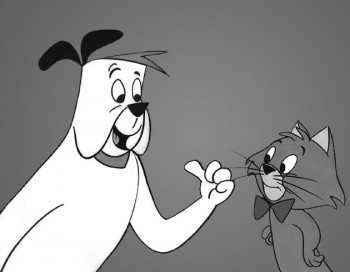 Let me tell you my history here. I remember when Ruff and Reddy first appeared. I was a kid watching the Howdy Doody Show. They’d gathered their “peanut gallery†at the end of their program to announce that a great new cartoon was going to premiere next Saturday at 10:30 AM, following their program, and they showed a short clip.
Let me tell you my history here. I remember when Ruff and Reddy first appeared. I was a kid watching the Howdy Doody Show. They’d gathered their “peanut gallery†at the end of their program to announce that a great new cartoon was going to premiere next Saturday at 10:30 AM, following their program, and they showed a short clip.
The next weekend, I was ready for Ruff and Reddy. Howdy and Buffalo Bob reminded us to watch it. The excitement built to a high.
I watched. I don’t remember much about it; the show didn’t make an impression. I remember a lot of the Howdy Doody shows; not much about Ruff and Reddy. I remember liking the opening credits with the two characters in frames. I remember it was, of course, in B&W as all TV was back then. That’s about it. A lot of long shots cut to close ups. I remember that. I was 10. Disney’s Sleeping Beauty was still two years away.
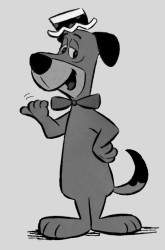 A couple of years later Huckleberry Hound premiered in syndicated form on local channel 11. It was ok; I liked the design style. However, I recognized that there wasn’t a lot happening and that the backgrounds didn’t have a lot on them. I did like the sponge painting technique; I’d never seen anything like it.
A couple of years later Huckleberry Hound premiered in syndicated form on local channel 11. It was ok; I liked the design style. However, I recognized that there wasn’t a lot happening and that the backgrounds didn’t have a lot on them. I did like the sponge painting technique; I’d never seen anything like it.
There were a lot of news stories about adults watching Huckleberry Hound (with its other featured cartoons – Yogi Bear and Snagglepuss.) I was maybe 12, but I got the reference to Yogi Berra, and I got the parody of Bert Lahr’s voice. He was the Cowardly Lion; how could I miss it? This show was also in B&W, though color TV was just starting to enter our world.
Yeah, I watched the show daily. I watched more after Yogi Bear got his own show, and I enjoyed the Quick Draw McGraw segments. But there were all those wild west backgrounds with only tiny buttes on the straight lined horizons. Maybe a cactus appeared on the bicycle pans, and I got to recognize what a bicycle pan was (without knowing the term). Essentially I was picking up some animation cheats without doing more than watching.
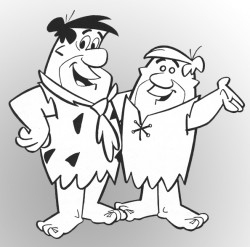 The Flintstones got a lot of attention when they first appeared on ABC. After all, this was the first animated sitcom. It looked a lot like The Honeymooners, but I liked that. It also reminded me of the Fleischer shorts I’d seen about the cavemen living in a somewhat modern world. There was also that Tex Avery cartoon that was similar; I’d seen it on TV by then. I enjoyed those early Flintstones. It was entertaining when they had their baby, Pebbles. Somehow, though, the show lost it for me about that time. I didn’t watch after Bam Bam entered. By then the great inking was not looking so great. I don’t think I saw The Flintstones in color until the 1970′s.
The Flintstones got a lot of attention when they first appeared on ABC. After all, this was the first animated sitcom. It looked a lot like The Honeymooners, but I liked that. It also reminded me of the Fleischer shorts I’d seen about the cavemen living in a somewhat modern world. There was also that Tex Avery cartoon that was similar; I’d seen it on TV by then. I enjoyed those early Flintstones. It was entertaining when they had their baby, Pebbles. Somehow, though, the show lost it for me about that time. I didn’t watch after Bam Bam entered. By then the great inking was not looking so great. I don’t think I saw The Flintstones in color until the 1970′s.
I watched The Jetsons for a small time; I liked TopCat for the first season (all those voices culled from the Phil Silvers “Bilko†show.)
I opted out once Jonny (ugh) Quest entered, and I never went back to H&B.
Looking back on it all, I see how limited the animation was, but I knew that back then and imitated it in my own 12 year old’s animation. I tried doing the limited animation as H&B developed it, but I’d also tried it as Ward Kimball did it in Toot Whistle Plunk & Boom and those other Disney Tomorrowland shows he did. Mr. Magoo’s Christmas Carol was also a much bigger influence than H&B.
The backgrounds were interesting, but I was much more interested in the design style I’d seen in 101 Dalmatians or Sleeping Beauty. I’d bought some B&W lobby cards from Sword In The Stone, and I tried my hand at imitating the backgrounds – in colors I’d choose. These were much more enjoyable than anything I’d seen in H&B cartoons.
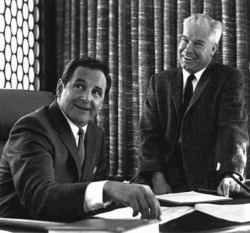 So, where am I going with all this? Looking back now on all that limited animation history, I have to say that I learned the tricks – probably many of them before I learned the right way to do it. I also got to realize that H&B truly flattened out the animation in ways that UPA and Kimball’s limited animation didn’t do.
So, where am I going with all this? Looking back now on all that limited animation history, I have to say that I learned the tricks – probably many of them before I learned the right way to do it. I also got to realize that H&B truly flattened out the animation in ways that UPA and Kimball’s limited animation didn’t do.
For a short time H&B and Ruby Spears farmed animation to New York animators. I picked up a lot of work and was able to animate and assist about 200 feet a week. They liked my stuff, and I made a lot of money in a short amount of time. Weeks later my shows would be on TV, and I couldn’t identify ANY of the scenes I did. It was all so forgettable. It was about making quick money, and I hated it. I quit and started my own company.
I had to unlearn the H&B method to get it out of my system, and I think that the world of animation also had to unlearn it. Unfortunately, I don’t think it ever came undone. All those bad habits that were designed by brilliant guys working for Hanna Barbera are too strong.
_Then, John Kricfalusi with Ren & Stimpy introduced newer ways of cheating – ways that worked for that show. Everyone who graduated from Cal Arts started imitating that.
_Now with the influence of Flash, tv animation is doomed to move east or west, bob up and down, and rarely toward or away from the screen. There is no such thing as perspective. Big actions happen off screen or pop from one pose to another (some justify this as an imitation of Tex Avery’s work – it’s not.) If a car crashes, do it off screen. Just shake the background with the audio crash. There are a hundred much more subtle cheats I could point out. You see them everywhere: in anything on tv, in Persepolis, in The Triplettes of Belleville, in newer Disney features. Everywhere.
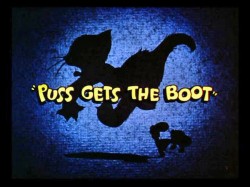 Today, there’s a lot of sloppy cheating and very little animation to see. It all did really start with Hanna Barbera when they modernized animation to become a big assembly line. Michael Barrier is right in his review. I’m not a fan of Hanna and Barbera’s work – not even on the Tom and Jerry cartoons. (As a matter of fact, I suspect they helped Rudy Ising get the boot from MGM after taking his characters from that first T&J cartoon, Puss Gets The Boot.) But I’m not talking about their MGM work, here. I’m just interested in the factory they built on Cahuenga Blvd and the bad habits they offered the future.
Today, there’s a lot of sloppy cheating and very little animation to see. It all did really start with Hanna Barbera when they modernized animation to become a big assembly line. Michael Barrier is right in his review. I’m not a fan of Hanna and Barbera’s work – not even on the Tom and Jerry cartoons. (As a matter of fact, I suspect they helped Rudy Ising get the boot from MGM after taking his characters from that first T&J cartoon, Puss Gets The Boot.) But I’m not talking about their MGM work, here. I’m just interested in the factory they built on Cahuenga Blvd and the bad habits they offered the future.
In a way it’s brought us back to the days of silent animation. Col. Heeza Liar probably used more drawings than your average Huck Hound cartoon. I’m not sure the stories were any better either.
Is it time to invent Mickey Mouse again?
